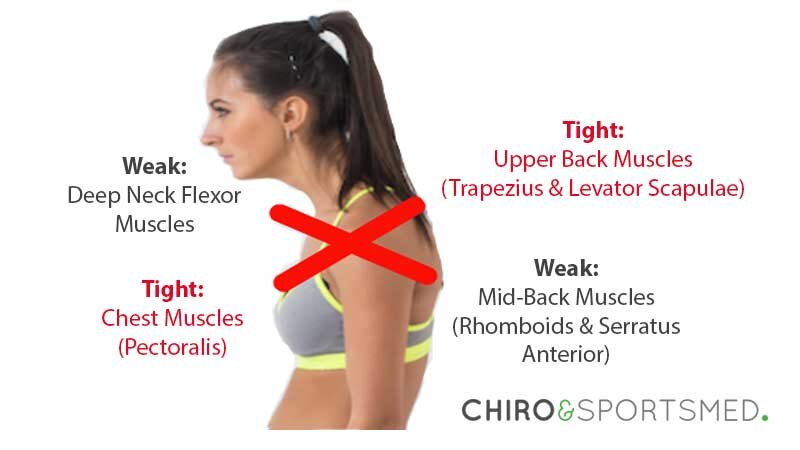Catch a side view of yourself in the mirror and you might notice that your ears are slightly forward of your shoulders or that your neck is curved. It may look like you’re slouching even when standing tall, or that you have a “winged scapula”. During exercise, you might notice your shoulders shrug during pushing or pulling. You may have experienced a shoulder injury from instability, or suffer from headaches. You might even feel your breathing is inefficient.
Well guess what? There is a name for that. It’s called Upper Cross Syndrome due to the X you can draw between tight and lengthened muscles in your upper body. And although it’s common among moms, we can’t just blame the kids (although heavier breasts from pregnancy or breastfeeding can contribute). Upper Cross Syndrome affects anyone that is spending extended periods of time with your head forward (think phones and computers). Put simply there is increased stress on your neck and shoulders, which can cause some muscles to be too tight and some muscles to be weak and lengthened.
The good news is that it can be improved or corrected. Here are some starting points:
Daily Life: Determine the positions during the day that are causing your upper cross syndrome and then reduce time in those positions. Feeding the baby? Change up the position. Working on your computer? Use a chair with good lumbar support, ensure the proper height of the keyboard, and take movement breaks. Moms, the daily stuff really adds up, so these small changes can have a huge impact! *Side note, consider your bra. If it’s not supportive, your breast can be pulling you forward.
Lengthen: Free up the shortened muscles that are pulling you forward. Muscles like the upper trapezius, levator scapulae, and pecs (upper back and chest) can be lengthened through dynamic and static stretching, as well as using tools like a tennis ball or foam roller. A doorway chest stretch and some upper back foam rolling is a great place to start. Stretches like ear to shoulder while also tilting your chin toward your shoulder are helpful as well.
Strengthen: Your rhomboids, serratus anterior, and lower traps (mid back), as well as your neck flexors, are probably lengthened and weak. Exercises such as standing or floor Y-raises, and chin tucks are a simple place to start.
So what do you say mama, are you ready to address what has always just been called poor posture? Find a program that works for you!



